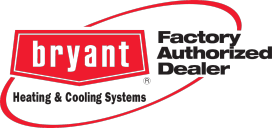
First things first: This article is not meant to make you feel bad.
I just wanted to get that out of the way, because I’m about to tell you that seven things you probably think are true are, in fact, false.
Don’t worry; there’s no shame in having misconceptions. Unless you’re in the HVAC industry, you probably don’t spend a lot of time thinking about the mechanisms behind air conditioning. That’s fine!
This article is simply meant to educate you – and, potentially, save you some time, money, and effort.
Because if you have a more accurate understanding of how air conditioning works, you’ll probably be able to access air conditioning services more efficiently.
With that in mind, here are seven things most people think about air conditioning that actually aren’t true.
1. The fan outside is releasing air from inside.
When people hear the fan running on their outdoor unit, they often think, “Nice – my air conditioning is blowing away the hot air from inside of my house.”
That idea seems intuitive, but it’s not actually how air conditioning works.
The truth is that air conditioning doesn’t transfer air from inside to outside. It only circulates air inside your home. All that’s being transferred from inside to outside is heat, via your refrigerant line.
When the fan outside starts blowing, it’s helping to release heat from the refrigerant – but it’s not discharging air from inside your house.
2. Turning the thermostat lower will make AC blow colder.
It’s also common for people to believe that turning the thermostat from 68 degrees to 60 degrees will make the air conditioning blow colder air. But the setting on the thermostat is not referring to the temperature of the air that’s coming out of the vents – it’s referring to the target temperature set for the home.
So, turning the thermostat lower will reduce the target temperature, but the air coming out of the vents will remain the same temperature. Generally, that’s about 14 to 20 degrees cooler than the air in your home.
The result when you set a lower temperature is that your air conditioning will run for a longer period of time, because it will take longer to reach 60 degrees than it would to reach 68 degrees.
(This misconception isn’t helped by air conditioning in older cars, which works the other way – when you turn the dial down toward the cool side, the air coming out of the vents actually does get colder.)
3. When your AC is fixed, your home will return to normal temperatures right away.
We often get calls a few hours after we’ve completed AC service, with homeowners saying something like, “You guys said you fixed my air conditioning two hours ago, but my thermostat is still reading higher temperatures than normal.”
The truth is that it actually takes a while for temperatures to get back to normal, especially if things have gotten pretty hot or if there’s a lot of humidity.
That’s because your air conditioner will first have to remove what we call latent heat from the air. Basically, this means that your AC has to remove humidity before sensible heat (the number you see on your thermostat) starts to decrease.
If you get your air conditioning fixed during the day, you probably won’t see normal temperatures on your thermostat until later in the evening, or maybe even until the following morning.
Don’t worry – as long as your vents are blowing cold air, your unit is working.
4. AC is independent of the furnace.
Because you typically have to switch between heating and cooling modes to use your HVAC systems, it’s common to think of heating and cooling as two separate systems.
This leads homeowners to believe that all air conditioning problems must be linked to the units they see sitting out in their yards.
While heating and cooling are distinct systems, in most cases, they share some components. For example, if you have central heating, your furnace and your air conditioning use the same ducts to distribute air. They also use the same blower from the furnace to move the air throughout your home.
This means that, if you have a problem with air flow, the problem likely doesn’t sit outside in your yard; it’s possible that the blower motor of your furnace may need work.
5. The thermostat temperature isn’t accurate.
The reality is that thermostat temperatures are almost always accurate. But there are two common causes of perceived discrepancies.
First, if your thermostat is showing a high temperature or isn’t changing when you turn on the AC, the problem is most likely with other pieces of equipment. In these cases, your unit is broken, not your thermostat.
Second, your thermostat is only reading the temperature of the air where it’s placed. If it feels hotter upstairs than your thermostat shows in the first-floor hallway, that’s because it probably is.
You should expect temperature to vary by plus-or-minus three degrees throughout your home. If it varies more than that, you may want to consider solutions like zoning – but the problem probably isn’t the thermostat.
(All right, fine, sometimes the problem is the thermostat. But nine out of ten times, it’s not.)
6. You don’t need AC service if your AC is working.
If you’ve read any of our emails or blog posts in the past three years, you don’t subscribe to this belief. Unfortunately, not everyone reads our emails and blog posts.
As a result, a lot of people think that air conditioning service is only needed when something breaks. This is a dangerous thing to think.
The reality is that your air conditioning, like any highly complex system, needs service regularly. This is especially true for newer units, which are built to be highly controlled – meaning that they’ll turn off if things get slightly misaligned.
Just as you should regularly check your car’s systems and change its oil, you should regularly have your air conditioning looked at, too.
Actually, you should probably have air conditioning service done more often.
7. You can’t get AC service if it’s not hot outside.
Finally, it’s common for people to put off AC service during the spring or mild periods because they think that technicians need to be able to test systems in heat for accurate readings.
The truth is that it doesn’t have to be too hot for technicians to perform AC service checkups. If it’s 65 or 70 degrees, you can still get an accurate idea of what’s going on.
In fact, it’s best to schedule maintenance earlier in the season, because when we get to the heart of summer, we’re busier, and it can be harder to find time slots.
Need help with your air conditioning?
Hopefully, unpacking these seven misconceptions has made you feel empowered, not abashed. Again, there’s no shame in not knowing everything about HVAC.
We just want to make sure you have the knowledge you need to keep your home comfortable.
If you need more air conditioning help, give us a call.
At Rod Miller, we’ve been helping Maryland homeowners to get the most out of their AC units and maintain comfortable homes for over 50 years. We can help you to get the service you need – and avoid any trouble that you don’t.


